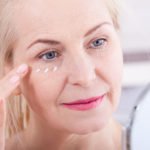We’ve certainly explored L-carnosine many times before. It’s one of the key ingredients in my anti-aging formula. And even after all these years (LEF and I were among the first in the U.S. to use it as an ingredient back in the late 90’s), it still stands as the single most important anti-aging ingredient available. But today, I want to cover two aspects of this amazing ingredient that I haven’t really covered before.
- Some of the things for which this dipeptide has been proven beneficial that are not related to anti-aging–especially improving athletic performance.
- Using β-alanine VS using carnosine itself to raise carnosine levels in the body–and, yes, there is a crucial difference you need to be aware of.
A Little Background
Carnosine is a dipeptide formed from the naturally occurring amino acids β-alanine and L-histidine. It was discovered in 1900 as a non-protein, nitrogen-containing compound of meat. In humans, it is mostly concentrated in skeletal muscle, which is where athletes try to maximize its potential with β-alanine supplements; but crucially, it is also concentrated In organs throughout the body where it protects proteins and in “excitable” tissue such as the olfactory system, where it is highly concentrated in the olfactory bulb, and the central nervous system and every neuron in the brain, where it acts as a neurotransmitter, neuromodulator, and neuroprotective agent.
In addition to the functions just mentioned, carnosine plays key roles in pH-buffering, metal-ion chelation, and antioxidant capacity as well as the capacity to protect against formation of advanced glycation and lipoxidation end-products. For these reasons, the therapeutic potential of carnosine supplementation has been tested for use in treating numerous diseases in which ischemic (restriction of the blood supply to tissue causing a shortage of oxygen) or oxidative stress are involved. For several pathologies, such as diabetes and its complications, ocular disease, aging, and neurological disorders, promising preclinical and clinical results have been obtained. Carnosine is the real deal.
As an Antioxidant
 Many studies have demonstrated that supplemental carnosine acts as an antioxidant in both physiological conditions and in models in which the oxidative damage is induced by xenobiotics (toxic chemicals introduced into the body).1 Alexander A. Boldyrev, Giancarlo Aldini, and Wim Derave. “Physiology and Pathophysiology of Carnosine.” Physiol Rev. 2013 Oct;93(4):1803-45. http://www.physiology.org/doi/full/10.1152/physrev.00039.2012 The antioxidant effect can be explained by considering both a direct scavenging effect towards free radicals and by an increase, sparing, and/or regenerating effect on enzymatic and nonenzymatic antioxidants. In some studies, this antioxidant effect was found to be linked to a reduction in both tissue damage and functional impairment. That’s a big deal.
Many studies have demonstrated that supplemental carnosine acts as an antioxidant in both physiological conditions and in models in which the oxidative damage is induced by xenobiotics (toxic chemicals introduced into the body).1 Alexander A. Boldyrev, Giancarlo Aldini, and Wim Derave. “Physiology and Pathophysiology of Carnosine.” Physiol Rev. 2013 Oct;93(4):1803-45. http://www.physiology.org/doi/full/10.1152/physrev.00039.2012 The antioxidant effect can be explained by considering both a direct scavenging effect towards free radicals and by an increase, sparing, and/or regenerating effect on enzymatic and nonenzymatic antioxidants. In some studies, this antioxidant effect was found to be linked to a reduction in both tissue damage and functional impairment. That’s a big deal.
Even more impressive, at physiological concentrations, carnosine was found to directly react with the superoxide radical in the same manner as superoxide dismutase (SOD)–not significantly different in respect to that of ascorbic acid and alpha-tocopherol.2 Klebanov GI , Teselkin Y , Babenkova IV , Popov IN , Levin G , Tyulina OV , Boldyrev AA , Vladimirov Y. “Evidence for a direct interaction of superoxide anion radical with carnosine.” Biochem Mol Biol Int 43: 99–106, 1997. http://iubmb.onlinelibrary.wiley.com/doi/pdf/10.1080/15216549700203861 Carnosine is also an effective quencher of hydroxyl radicals (·OH).3 Tamba M , Torreggiani A. “A pulse radiolysis study of carnosine in aqueous solution.” Int J Radiat Biol 74: 333–340, 1998. http://www.tandfonline.com/doi/abs/10.1080/095530098141474 And purified carnosine is capable of scavenging peroxyl radicals at a millimolar concentration range, with a potency similar to that shown by l-histidine. (Incidentally, β-alanine is ineffective in this regard, thus suggesting that the radical scavenging activity of carnosine is largely due to the l-histidine residue. This is worth keeping in mind for those looking to raise intramuscular levels of carnosine by supplementing with β-alanine.) To summarize, according to Kim et al., 6 weeks of carnosine supplementation in the diet of rats was found to increase the activities of enzymatic antioxidants such as SOD and glutathione peroxidase.4 Kim MY , Kim EJ , Kim YN , Choi C , Lee BH. “Effects of alpha-lipoic acid and l-carnosine supplementation on antioxidant activities and lipid profiles in rats.” Nutr Res Pract 5: 421–428, 2011. http://synapse.koreamed.org/DOIx.php?id=10.4162/nrp.2011.5.5.421 Furthermore, the supplementation induced a decrease in lipid peroxidation in blood serum, liver tissue, and the skin, and positively modified blood lipid profiles.
Many studies have also reported on the antioxidant activity of carnosine in animal models where the oxidative stress condition in different organs was induced by xenobiotics. The protective effect of carnosine in the liver was studied in a rat model of ethanol-induced chronic liver injury.5 Liu WH , Liu TC , Yin MC. “Beneficial effects of histidine and carnosine on ethanol-induced chronic liver injury.” Food Chem Toxicol. 2008 May;46(5):1503-9. http://www.ncbi.nlm.nih.gov/pubmed/18222027
Supplemented carnosine was also found to act as an antioxidant in the brain, as evidenced by decreased malondialdehyde and protein carbonyls induced by ethanol ingestion6 Ozel TU , Bilgihan A , Biberoglu G , Mertoglu CO. “Carnosine supplementation protects rat brain tissue against ethanol-induced oxidative stress.” Mol Cell Biochem 339: 55–61, 2010. http://link.springer.com/article/10.1007/s11010-009-0369-x and by protecting cerebral cytosolic SOD in two live models of oxidative stress:7 Stvolinskii SL , Fedorova TN , Yuneva MO , Boldyrev AA. “Protective effect of carnosine on Cu,Zn-superoxide dismutase during impaired oxidative metabolism in the brain in vivo.” Bull Exp Biol Med 135: 130–132, 2003. http://link.springer.com/article/10.1023/A:1023855428130
- Hypobaric hypoxia (high altitude oxygen deprivation such as experienced during an airplane flight)
- And in senescence-accelerated mice
As we will see later, β-alanine supplementation will not produce these benefits outside of muscle tissue.
Preventing the Formation of Advanced Lipoxidation End-products (ALEs)
Several studies have reported the ability of carnosine to prevent the formation of advanced glycoxidation end-products (AGEs) and advanced lipoxidation end-products (ALEs). These compounds are both involved in the aging process as well as in the onset and propagation of several oxidative-based diseases such as diabetes, atherosclerosis, and Alzheimer’s disease. We have previously explored carnosine’s value in preventing the formation of AGEs, so, for today, let’s focus on its role in preventing ALEs.
Lipoxidation refers to the oxidation of fats in the body, the result of which are byproducts that react with proteins. Current evidence suggests that carnosine’s ability to act as a potent inhibitor of ALEs relates to the ability of carnosine to quench reactive aldehydes, which represent the most abundant class of ALEs precursors.8 Zhou S , Decker EA. “Ability of carnosine and other skeletal muscle components to quench unsaturated aldehydic lipid oxidation products.” J Agric Food Chem 47: 51–55, 1999. http://pubs.acs.org/doi/abs/10.1021/jf980780j , 9 Aldini G , Facino RM , Beretta G , Carini M. “Carnosine and related dipeptides as quenchers of reactive carbonyl species: from structural studies to therapeutic perspectives.” Biofactors 24: 77–87, 2005. http://content.iospress.com/articles/biofactors/bio00785
It should be noted that, unlike carnosine supplementation, β-alanine supplementation is totally ineffective when it comes to preventing the formation of ALEs.10 Aldini G , Carini M , Beretta G , Bradamante S , Facino RM. “Carnosine is a quencher of 4-hydroxy-nonenal: through what mechanism of reaction?” Biochem Biophys Res Commun Volume 298, Issue 5, 15 November 2002, Pages 699-706. http://www.sciencedirect.com/science/article/pii/S0006291X02025457
Carnosine and Athletic Performance
As you will remember, carnosine is a dipeptide comprised of β-alanine and histidine. In your muscles, histidine levels are normally high and beta-alanine levels low, which limits the production of carnosine.11 Artioli GG, Gualano B, Smith A, Stout J, Lancha AH Jr. “Role of beta-alanine supplementation on muscle carnosine and exercise performance.” Med Sci Sports Exerc. 2010 Jun;42(6):1162-73. http://www.ncbi.nlm.nih.gov/pubmed/20479615 , 12 Derave W, Ozdemir MS, Harris RC, et al. “beta-Alanine supplementation augments muscle carnosine content and attenuates fatigue during repeated isokinetic contraction bouts in trained sprinters.” J Appl Physiol (1985). 2007 Nov;103(5):1736-43. http://www.ncbi.nlm.nih.gov/pubmed/17690198 Supplementing with beta-alanine, the rate-limiting precursor of carnosine, has been shown to elevate the carnosine content in muscle. For this reason, β-alanine has become one of the more popular sport supplements used by strength/power athletes today. The popularity of β-alanine stems from its ability to elevate carnosine levels in muscle tissue, which reduces lactic acid accumulation in muscles during exercise, which leads to improved athletic performance.13 Derave , 14 Eric T. Trexler, Abbie E. Smith-Ryan, et al. “International society of sports nutrition position stand: Beta-Alanine.” J Int Soc Sports Nutr. 2015; 12: 30. http://www.ncbi.nlm.nih.gov/pmc/articles/PMC4501114/ In other words, carnosine works as an intramuscular pH buffer and calcium regulator, and supplementing with β-alanine can raise those levels.15 Jones RL, Barnett CT, Davidson J, et al. “ß-alanine supplementation improves in-vivo fresh and fatigued skeletal muscle relaxation speed.” Eur J Appl Physiol. 2017 May;117(5):867-879. http://www.ncbi.nlm.nih.gov/pmc/articles/PMC5388709/ In a related action, carnosine has also been shown to increase cellular oxygen consumption.16 Schnuck JK, Sunderland KL, Kuennen MR, Vaughan RA. “Characterization of the metabolic effect of ß-alanine on markers of oxidative metabolism and mitochondrial biogenesis in skeletal muscle.” J Exerc Nutrition Biochem. 2016 Jun;20(2):34-41. http://www.ncbi.nlm.nih.gov/pmc/articles/PMC4977905/ Specifically, muscle carnosine loading through chronic oral beta-alanine supplementation has been shown to be effective for short-duration, high-intensity exercise.
For example, in a study of water-polo players, beta-alanine supplementation was shown to improve throwing velocities, the ability to perform repeated sprints, and in 200-m swimming performance in young water polo players.17 Claus GM, Redkva PE, Brisola GMP, et al. “Beta-Alanine Supplementation Improves Throwing Velocities in Repeated Sprint Ability and 200-m Swimming Performance in Young Water Polo Players.” Pediatr Exerc Sci. 2017 May;29(2):203-212. http://www.ncbi.nlm.nih.gov/pubmed/28121265 And it’s been shown to effectively enhance judo-related performance in highly-trained athletes–improving both the number of throws per set and the total number of throws in total.18 de Andrade Kratz C, de Salles Painelli V, de Andrade Nemezio KM, et al. “Beta-alanine supplementation enhances judo-related performance in highly-trained athletes.” J Sci Med Sport. 2017 Apr;20(4):403-408. http://www.ncbi.nlm.nih.gov/pubmed/27601217
Which leads us to the question: if beta-alanine works to raise carnosine levels, is cheaper and backed by numerous studies related to athletic performance, why do I recommend carnosine supplementation over β-alanine supplementation?
The Things Carnosine Does that Beta Alanine Does Not Do
 Carnosine is synthesized in animal tissues, especially muscle and brain tissue,19 Hipkiss AR. “Glycation, ageing and carnosine: are carnivorous diets beneficial?” Mech Ageing Dev. 2005 Oct;126(10):1034-9. http://www.ncbi.nlm.nih.gov/pubmed/15955546 and is not contained in any plant foods, which is probably why at least one study has shown vegetarians have 50% or less carnosine in their muscle tissue than non-vegetarians.20 Harris RC, Jones G, Hill CA, et al. “The Carnosine Content of V Lateralis in Vegetarians and Omnivores.” The FASEB Journal. 2007;21:769.20. http://www.fasebj.org/doi/abs/10.1096/fasebj.21.6.A944-a In muscle tissue, beta-alanine is the limiting amino factor in the synthesis of carnosine,21 Everaert I, Stegen S, Vanheel B, Taes Y, Derave W. “Effect of beta-alanine and carnosine supplementation on muscle contractility in mice.” Med Sci Sports Exerc. 2013 Jan;45(1):43-51. http://www.ncbi.nlm.nih.gov/pubmed/22895378 which is why it works as a carnosine supplement for athletes–at least when it comes to improving athletic performance. In other tissue, and systemically throughout the body, not so much. This explains why most study’s for how carnosine improves athletic performance are based on supplemental β-alanine. But when it comes to all the other benefits associated with carnosine (anti-aging, protection of organs including the liver, pancreas, kidneys, and skin), and mitigating diabetes, the studies employ carnosine supplementation, not β-alanine supplementation. Let’s look at a handful of those studies.
Carnosine is synthesized in animal tissues, especially muscle and brain tissue,19 Hipkiss AR. “Glycation, ageing and carnosine: are carnivorous diets beneficial?” Mech Ageing Dev. 2005 Oct;126(10):1034-9. http://www.ncbi.nlm.nih.gov/pubmed/15955546 and is not contained in any plant foods, which is probably why at least one study has shown vegetarians have 50% or less carnosine in their muscle tissue than non-vegetarians.20 Harris RC, Jones G, Hill CA, et al. “The Carnosine Content of V Lateralis in Vegetarians and Omnivores.” The FASEB Journal. 2007;21:769.20. http://www.fasebj.org/doi/abs/10.1096/fasebj.21.6.A944-a In muscle tissue, beta-alanine is the limiting amino factor in the synthesis of carnosine,21 Everaert I, Stegen S, Vanheel B, Taes Y, Derave W. “Effect of beta-alanine and carnosine supplementation on muscle contractility in mice.” Med Sci Sports Exerc. 2013 Jan;45(1):43-51. http://www.ncbi.nlm.nih.gov/pubmed/22895378 which is why it works as a carnosine supplement for athletes–at least when it comes to improving athletic performance. In other tissue, and systemically throughout the body, not so much. This explains why most study’s for how carnosine improves athletic performance are based on supplemental β-alanine. But when it comes to all the other benefits associated with carnosine (anti-aging, protection of organs including the liver, pancreas, kidneys, and skin), and mitigating diabetes, the studies employ carnosine supplementation, not β-alanine supplementation. Let’s look at a handful of those studies.
- A 2016 study published in Obesity found that carnosine supplementation may be an effective strategy for prevention of Type 2 diabetes.22 de Courten B, Jakubova M, de Courten MP, et al. “Effects of carnosine supplementation on glucose metabolism: Pilot clinical trial.” Obesity (Silver Spring). 2016 May;24(5):1027-34. http://www.ncbi.nlm.nih.gov/pubmed/27040154 Notably, two-hour glucose and insulin were both lower after carnosine supplementation compared to placebo in individuals with impaired glucose tolerance.
- Likewise, a 2018 study found that oral supplementation with L-Carnosine for 12 weeks resulted in a significant improvement of oxidative stress, glycemic control, and renal function in pediatric patients with diabetic nephropathy.23 Elbarbary NS, Ismail EAR, El-Naggar AR, Hamouda MH, El-Hamamsy M. “The effect of 12 weeks carnosine supplementation on renal functional integrity and oxidative stress in pediatric patients with diabetic nephropathy: a randomized placebo-controlled trial.” Pediatr Diabetes. 2018 May;19(3):470-477. http://www.ncbi.nlm.nih.gov/pubmed/28744992
- A 2018 study published in Geriatrics & Gerontology International clearly showed that carnosine supplementation decreases oxidative stress and advanced glycation end-products (AGE) formation that play an important role in the pathogenesis of aging.24 Bingül I, Yilmaz Z, Aydin AF, et al. “Antiglycation and anti-oxidant efficiency of carnosine in the plasma and liver of aged rats.” Geriatr Gerontol Int. 2017 Dec;17(12):2610-2614. http://www.ncbi.nlm.nih.gov/pubmed/28776910
- A 2001study published in PLoS One concluded that carnosine supplementation promotes a strong reduction in the hippocampal intraneuronal accumulation of beta amyloid plaque and completely rescues Alzheimer’s disease and aging-related mitochondrial dysfunctions.25 Corona C, Frazzini V, Silvestri E, et al. “Effects of dietary supplementation of carnosine on mitochondrial dysfunction, amyloid pathology, and cognitive deficits in 3xTg-AD mice.” PLoS One. 2011 Mar 15;6(3):e17971. http://www.ncbi.nlm.nih.gov/pmc/articles/PMC3058055/
I could go on, but you get the idea. When it comes to anything outside muscle tissue, only supplementation with carnosine itself will get you the results you’re looking for. But with that said, let’s look at one more study that drives home the difference between carnosine supplementation and β-alanine supplementation.
- In 2015, results published in Applied Physiology, Nutrition, and Metabolism found that although muscle carnosine concentrations increase equally in carnosine and β-alanine groups, only supplementation with carnosine elevates plasma carnosine levels.26 Stegen S, Stegen B, Aldini G, et al. “Plasma carnosine, but not muscle carnosine, attenuates high-fat diet-induced metabolic stress.” Appl Physiol Nutr Metab. 2015 Sep;40(9):868-76. http://www.ncbi.nlm.nih.gov/pubmed/26307517 This is critical as the study concluded that only plasma carnosine, not muscle carnosine, is involved in preventing early-stage lipoxidation in the circulation and inflammatory signaling to muscle tissue. In other words, even when it comes to athletes and muscle performance, supplementation with carnosine is superior to supplementation with β-alanine.
Conclusion
 So, if all you’re looking for is to get 80% of the athletic advantages of carnosine at the lowest price, then you’re better off buying a β-alanine supplement. It’s much less expensive than carnosine. High quality, high purity carnosine is very expensive. You can buy formulas made with lesser quality carnosine, but why go there? Better to get a good quality β-alanine formula than cheap carnosine. But keep two things in mind.
So, if all you’re looking for is to get 80% of the athletic advantages of carnosine at the lowest price, then you’re better off buying a β-alanine supplement. It’s much less expensive than carnosine. High quality, high purity carnosine is very expensive. You can buy formulas made with lesser quality carnosine, but why go there? Better to get a good quality β-alanine formula than cheap carnosine. But keep two things in mind.
- You must use a lot more β-alanine than carnosine to get the same effect. We’re talking about four times as much (6 g a day VS 1.5 g a day), which brings the price differential a lot closer.
- β-alanine will only give you about 80% of the athletic benefits of a carnosine-based supplement. Yes, it will raise levels of carnosine inside muscle tissue, but, as already noted, only supplementation with carnosine itself elevates plasma carnosine levels.27 Stegen It may be a secondary benefit, but it’s still an important benefit when it comes to athletic performance.
The bottom line, then, In terms of athletic performance, is that it comes down to one question is: is a secondary benefit worth a few dollars extra per bottle. And that, of course, is up to the individual athlete.
But the far more important consideration is: if you want the full range of carnosine benefits, then you really have no choice. β-alanine supplementation simply does not provide the range of benefits that carnosine supplementation does. If you’re looking for things like:
- Anti-aging
- Better skin appearance
- Protection of internal organs
- Protection against diabetes
- Protection of brain tissue, including Alzheimer’s protection
- Etc.
Then you have no choice. β-alanine simply doesn’t do that. β-alanine only raises carnosine levels inside muscle tissue (and certain brain cells). But for the most part, to paraphrase the Las Vegas ads, “What happens with carnosine inside your muscle tissue stays inside your muscle tissue.”
And finally, let me put in a plug for my own version of a carnosine-based formula that also includes DMAE and acetyl-l-carnitine. These two ingredients both support carnosine’s positive effects throughout your body as well as adding their own complementary benefits. It’s the best of all possible worlds. I’ve been taking it daily for 20+ years now.

References
| ↑1 | Alexander A. Boldyrev, Giancarlo Aldini, and Wim Derave. “Physiology and Pathophysiology of Carnosine.” Physiol Rev. 2013 Oct;93(4):1803-45. http://www.physiology.org/doi/full/10.1152/physrev.00039.2012 |
|---|---|
| ↑2 | Klebanov GI , Teselkin Y , Babenkova IV , Popov IN , Levin G , Tyulina OV , Boldyrev AA , Vladimirov Y. “Evidence for a direct interaction of superoxide anion radical with carnosine.” Biochem Mol Biol Int 43: 99–106, 1997. http://iubmb.onlinelibrary.wiley.com/doi/pdf/10.1080/15216549700203861 |
| ↑3 | Tamba M , Torreggiani A. “A pulse radiolysis study of carnosine in aqueous solution.” Int J Radiat Biol 74: 333–340, 1998. http://www.tandfonline.com/doi/abs/10.1080/095530098141474 |
| ↑4 | Kim MY , Kim EJ , Kim YN , Choi C , Lee BH. “Effects of alpha-lipoic acid and l-carnosine supplementation on antioxidant activities and lipid profiles in rats.” Nutr Res Pract 5: 421–428, 2011. http://synapse.koreamed.org/DOIx.php?id=10.4162/nrp.2011.5.5.421 |
| ↑5 | Liu WH , Liu TC , Yin MC. “Beneficial effects of histidine and carnosine on ethanol-induced chronic liver injury.” Food Chem Toxicol. 2008 May;46(5):1503-9. http://www.ncbi.nlm.nih.gov/pubmed/18222027 |
| ↑6 | Ozel TU , Bilgihan A , Biberoglu G , Mertoglu CO. “Carnosine supplementation protects rat brain tissue against ethanol-induced oxidative stress.” Mol Cell Biochem 339: 55–61, 2010. http://link.springer.com/article/10.1007/s11010-009-0369-x |
| ↑7 | Stvolinskii SL , Fedorova TN , Yuneva MO , Boldyrev AA. “Protective effect of carnosine on Cu,Zn-superoxide dismutase during impaired oxidative metabolism in the brain in vivo.” Bull Exp Biol Med 135: 130–132, 2003. http://link.springer.com/article/10.1023/A:1023855428130 |
| ↑8 | Zhou S , Decker EA. “Ability of carnosine and other skeletal muscle components to quench unsaturated aldehydic lipid oxidation products.” J Agric Food Chem 47: 51–55, 1999. http://pubs.acs.org/doi/abs/10.1021/jf980780j |
| ↑9 | Aldini G , Facino RM , Beretta G , Carini M. “Carnosine and related dipeptides as quenchers of reactive carbonyl species: from structural studies to therapeutic perspectives.” Biofactors 24: 77–87, 2005. http://content.iospress.com/articles/biofactors/bio00785 |
| ↑10 | Aldini G , Carini M , Beretta G , Bradamante S , Facino RM. “Carnosine is a quencher of 4-hydroxy-nonenal: through what mechanism of reaction?” Biochem Biophys Res Commun Volume 298, Issue 5, 15 November 2002, Pages 699-706. http://www.sciencedirect.com/science/article/pii/S0006291X02025457 |
| ↑11 | Artioli GG, Gualano B, Smith A, Stout J, Lancha AH Jr. “Role of beta-alanine supplementation on muscle carnosine and exercise performance.” Med Sci Sports Exerc. 2010 Jun;42(6):1162-73. http://www.ncbi.nlm.nih.gov/pubmed/20479615 |
| ↑12 | Derave W, Ozdemir MS, Harris RC, et al. “beta-Alanine supplementation augments muscle carnosine content and attenuates fatigue during repeated isokinetic contraction bouts in trained sprinters.” J Appl Physiol (1985). 2007 Nov;103(5):1736-43. http://www.ncbi.nlm.nih.gov/pubmed/17690198 |
| ↑13 | Derave |
| ↑14 | Eric T. Trexler, Abbie E. Smith-Ryan, et al. “International society of sports nutrition position stand: Beta-Alanine.” J Int Soc Sports Nutr. 2015; 12: 30. http://www.ncbi.nlm.nih.gov/pmc/articles/PMC4501114/ |
| ↑15 | Jones RL, Barnett CT, Davidson J, et al. “ß-alanine supplementation improves in-vivo fresh and fatigued skeletal muscle relaxation speed.” Eur J Appl Physiol. 2017 May;117(5):867-879. http://www.ncbi.nlm.nih.gov/pmc/articles/PMC5388709/ |
| ↑16 | Schnuck JK, Sunderland KL, Kuennen MR, Vaughan RA. “Characterization of the metabolic effect of ß-alanine on markers of oxidative metabolism and mitochondrial biogenesis in skeletal muscle.” J Exerc Nutrition Biochem. 2016 Jun;20(2):34-41. http://www.ncbi.nlm.nih.gov/pmc/articles/PMC4977905/ |
| ↑17 | Claus GM, Redkva PE, Brisola GMP, et al. “Beta-Alanine Supplementation Improves Throwing Velocities in Repeated Sprint Ability and 200-m Swimming Performance in Young Water Polo Players.” Pediatr Exerc Sci. 2017 May;29(2):203-212. http://www.ncbi.nlm.nih.gov/pubmed/28121265 |
| ↑18 | de Andrade Kratz C, de Salles Painelli V, de Andrade Nemezio KM, et al. “Beta-alanine supplementation enhances judo-related performance in highly-trained athletes.” J Sci Med Sport. 2017 Apr;20(4):403-408. http://www.ncbi.nlm.nih.gov/pubmed/27601217 |
| ↑19 | Hipkiss AR. “Glycation, ageing and carnosine: are carnivorous diets beneficial?” Mech Ageing Dev. 2005 Oct;126(10):1034-9. http://www.ncbi.nlm.nih.gov/pubmed/15955546 |
| ↑20 | Harris RC, Jones G, Hill CA, et al. “The Carnosine Content of V Lateralis in Vegetarians and Omnivores.” The FASEB Journal. 2007;21:769.20. http://www.fasebj.org/doi/abs/10.1096/fasebj.21.6.A944-a |
| ↑21 | Everaert I, Stegen S, Vanheel B, Taes Y, Derave W. “Effect of beta-alanine and carnosine supplementation on muscle contractility in mice.” Med Sci Sports Exerc. 2013 Jan;45(1):43-51. http://www.ncbi.nlm.nih.gov/pubmed/22895378 |
| ↑22 | de Courten B, Jakubova M, de Courten MP, et al. “Effects of carnosine supplementation on glucose metabolism: Pilot clinical trial.” Obesity (Silver Spring). 2016 May;24(5):1027-34. http://www.ncbi.nlm.nih.gov/pubmed/27040154 |
| ↑23 | Elbarbary NS, Ismail EAR, El-Naggar AR, Hamouda MH, El-Hamamsy M. “The effect of 12 weeks carnosine supplementation on renal functional integrity and oxidative stress in pediatric patients with diabetic nephropathy: a randomized placebo-controlled trial.” Pediatr Diabetes. 2018 May;19(3):470-477. http://www.ncbi.nlm.nih.gov/pubmed/28744992 |
| ↑24 | Bingül I, Yilmaz Z, Aydin AF, et al. “Antiglycation and anti-oxidant efficiency of carnosine in the plasma and liver of aged rats.” Geriatr Gerontol Int. 2017 Dec;17(12):2610-2614. http://www.ncbi.nlm.nih.gov/pubmed/28776910 |
| ↑25 | Corona C, Frazzini V, Silvestri E, et al. “Effects of dietary supplementation of carnosine on mitochondrial dysfunction, amyloid pathology, and cognitive deficits in 3xTg-AD mice.” PLoS One. 2011 Mar 15;6(3):e17971. http://www.ncbi.nlm.nih.gov/pmc/articles/PMC3058055/ |
| ↑26 | Stegen S, Stegen B, Aldini G, et al. “Plasma carnosine, but not muscle carnosine, attenuates high-fat diet-induced metabolic stress.” Appl Physiol Nutr Metab. 2015 Sep;40(9):868-76. http://www.ncbi.nlm.nih.gov/pubmed/26307517 |
| ↑27 | Stegen |











